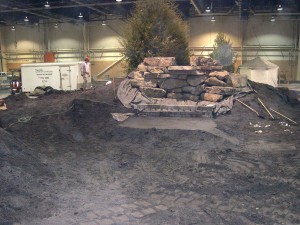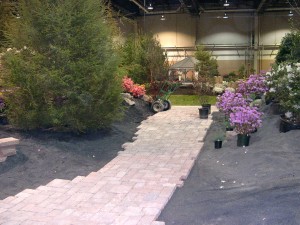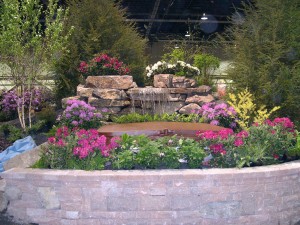How do the garden shows do it?
March 4th, 2010
It might not be nice to fool Mother Nature, but it’s a good thing the garden shows do anyway.
We really needed the sneak peek of spring given to us by last weekend’s Pennsylvania Garden Expo and this week’s Pennsylvania Home Show, Philadelphia Flower Show and Mid-Atlantic Garden Show in York.
The tulips and rhododendrons already are in full bloom inside these shows — if only for a few fleeting days.
How do they do it?
Most non-gardeners assume there’s a spray or treatment that growers use to magically produce blooms on demand.
Actually, it’s a part-skill, part-educated-guess technique called “forcing” that results in blooming azaleas weeks ahead of nature’s schedule.
Forcing involves waking plants from dormancy early by taking them into a heated greenhouse.
Give them just the right amount of heat, just enough light and time it just right, and you can control when those buds pop… to some degree.
Basically, it’s faking the plants into thinking it’s already April or May.
“Witch hazel, rhododendrons, forsythia and early-spring bloomers are pretty predictable,” says Joe Levendusky, who grew most of the plants for his company’s display garden at last weekend’s Pennsylvania Garden Expo. “But even things that bloom later in spring, they’re hard.”
Summer bloomers are possible but even more difficult — usually requiring cold pre-treatments, mechanically monitored heat and light and a long lead time.
Plus a little luck.
Since most shows run for only a few days, the margin of error is slim.
“If you’re even two weeks off, you get to watch the last petals fall off,” says Levendusky.
Nye’s Nursery and Landscape of Grantville had trees for its Expo display in a wood-heated greenhouse on Jan. 1.
Azaleas and rhododendrons need 4 to 6 weeks of lead time to flower at show time, but forsythia needs only 2 weeks.
“Over time, we’ve learned how long it takes to force different plants,” says co-owner Matt Nye. “Then you count back from when you need it.”
And you hope that fluctuations in outdoor temperatures and sunlight don’t throw off the calculations too much.
Not all of the landscapers force their own plants.
Most of the bulbs, pansies and primroses are grown by commercial greenhouses that grow just for these shows. These tend to be much more expensive, though, than equivalent plants in season.
Evergreens are a little easier. They can be dug with a tree spade, wrapped in wire baskets and burlap and dropped into place on the concrete floor with nary a whimper. Within days in the warmth, they green up.
That was a little more difficult this year because the landscapers had to dig through 2 feet of snow first just to get to the soil.
Smaller potted evergreens usually don’t mind moving from unheated greenhouse to show floor, although Levendusky says hollies resent it by browning around the edges.
Levendusky tapped into another plant family to add life to his 2010 display — colorful tropical houseplants such as croton, cordyline and snake plants.
These were easier because the color comes from the leaves, not from flowers that have to be forced.
Almost all plants are left in their pots and sunk into mulch as is. Mulch is pulled up to hide the pot lips.
Most plants can be salvaged after the shows, stored in greenhouses and planted outside in “real” spring, although they won’t bloom again until the following season.

Early stages of a Black Landscpe Contracting water feature taking shape at a past Pennsylvania Garden Expo.
As for the Expo gardens themselves and their elaborate water features, those are all built in 4 days on top of flat concrete.
That’s not easy either.
“I’ll admit it was overwhelming when I found out we couldn’t get started until Monday afternoon,” said John Reinford, whose Newville-based Reinford Landscapes built its first indoor display garden and ended up winning best of show. “There were skid loaders, dump trucks and people everywhere. We had our rectangle marked off in tape. It took us a little to get our bearings, but then stuff started happening.”
Boulders, big trees and the stonework for water go in first.
Hills and contours are built by stacking and packing stone dust — finely crushed limestone.
Then the rubber liners, pumps, pavers and smaller stone are added.
Levendusky says a lot of show-goers think the waterfalls are fed by constantly flowing water from a hidden pipe that sends the water down a drain in the pond.
“They don’t realize that these are all closed systems that recirculate,” he says.
One of the testiest moments is when the ponds are filled with water.
“If you poked a leak in your liner, then you have water over the whole show floor,” says Levendusky. “That’s happened already.”
Finally, mulch goes over the stone dust and the remainder of the floor, and the plants are inserted into it.
Instant spring.









